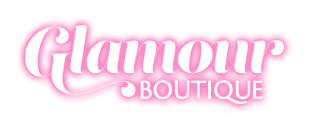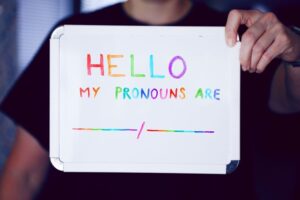As we strive towards creating a more inclusive and accepting society, it’s important that we educate ourselves on how to use language that is respectful and inclusive of all individuals. One of the most important aspects of inclusivity is understanding and respecting the gender identity of non-binary and transgender individuals. A simple but powerful way to do this is by using their correct pronouns. While it may seem daunting at first, mastering inclusivity is about taking the time to learn and practice. This guide will provide not only an overview of what it means to be transgender or non-binary, but also practical tips and examples of how to use the correct pronouns. By the end of this guide, you will feel confident in your ability to use these pronouns respectfully and with ease. Remember, inclusivity is not just a buzzword – it’s about valuing and respecting every individual, regardless of their gender identity. Let’s work towards a world where everyone feels seen and heard.
Understanding transgender and non-binary identities
Before we dive into the specifics of pronoun usage, it’s important to have a basic understanding of what it means to be transgender or non-binary. Simply put, transgender individuals are those whose gender identity does not align with the sex they were assigned at birth. Non-binary individuals, on the other hand, do not identify as solely male or female. This can mean they identify as a combination of both, neither, or something else entirely. It’s important to note that gender identity is not the same as biological sex or sexual orientation. Someone can be transgender or non-binary regardless of their physical anatomy or who they are attracted to. It’s a deeply personal aspect of one’s self that is often discovered and embraced over time.
The importance of using inclusive pronouns
Using the correct pronouns is an important aspect of respecting someone’s gender identity. It’s a way to acknowledge and affirm their identity, and it can have a significant impact on their mental health and well-being. When someone is consistently misgendered or referred to by the wrong pronouns, it can be incredibly hurtful and invalidating.Using inclusive pronouns is also a way to create a more welcoming and accepting environment for everyone. It sends the message that you value and respect all individuals, regardless of their gender identity. It can also help to break down harmful gender stereotypes and norms that limit our understanding of what it means to be a man or a woman.
Common transgender and non-binary pronouns and their usage
There are a variety of pronouns that transgender and non-binary individuals may use. Some of the most common ones include:
- They/them/theirs: This is a gender-neutral pronoun that can be used for anyone, regardless of their gender identity. It’s commonly used by non-binary individuals, but some transgender individuals may also prefer it.
- He/him/his and she/her/hers: These are the traditional binary pronouns that are used to refer to men and women, respectively.
- Ze/hir/hirs and xe/xem/xyrs: These are gender-neutral pronouns that are less commonly used, but may be preferred by some individuals.
It’s important to note that not everyone who is transgender or non-binary will use the same pronouns. Some may prefer to use a combination of different pronouns, or they may have their own unique pronouns. It’s always best to ask someone what pronouns they prefer and to use those consistently.
How to ask for and share pronouns respectfully
If you’re unsure of someone’s pronouns, it’s always best to ask. This can be done in a variety of ways, depending on the situation. In a professional setting, it may be appropriate to include a line in your email signature or on your business card that says something like, “My pronouns are she/her/hers.” This can help to normalize the practice of sharing pronouns and make it easier for others to do the same. In a more informal setting, you could simply ask someone what pronouns they prefer. You might say something like, “Hey, I want to make sure I’m using the correct pronouns for you. What do you prefer?” It’s important to do this in a respectful and non-intrusive way, and to make it clear that you’re asking out of a desire to be inclusive and respectful.
Addressing mistakes and making apologies
It’s important to remember that using the correct pronouns is a learning process, and mistakes will inevitably happen. When you do make a mistake, the best thing you can do is apologize and correct yourself. You might say something like, “I’m sorry, I meant to say ‘they’ instead of ‘he.'” It’s important to avoid making a big deal out of the mistake or putting the burden on the individual to reassure you that it’s okay. Simply apologize and move on. If someone else makes a mistake when referring to you or someone else, it’s important to correct them in a respectful and non-judgmental way. You might say something like, “Actually, my pronouns are she/her/hers.” It’s important to do this in a way that is not confrontational or aggressive, but rather in a way that is firm and assertive.
Resources for further education and support
If you’re looking to learn more about transgender and non-binary identities and how to be a better ally, there are a variety of resources available. Some great places to start include:
- GLAAD: This organization is dedicated to promoting LGBTQ+ acceptance and provides a variety of resources and information on transgender and non-binary issues.
- National Center for Transgender Equality: This organization advocates for policies that promote equality and provides resources and information on transgender rights.
- Trans Lifeline: This crisis hotline is staffed entirely by transgender individuals and provides support and resources for those in need.
Inclusivity in the workplace and beyond
Creating a more inclusive environment is important in all areas of life, including the workplace. If you’re a manager or business owner, it’s important to make sure your workplace policies and practices are inclusive of transgender and non-binary individuals. This might include things like providing gender-neutral restrooms, allowing employees to use their preferred name and pronouns, and providing education and training on inclusivity.
In addition, it’s important to be an ally in all areas of life, whether that’s in your personal relationships or your community. This might mean speaking up when you hear someone using derogatory language or making assumptions about someone’s gender identity. It might mean advocating for policies and laws that protect transgender and non-binary individuals. Whatever it looks like for you, being an ally is an important part of creating a more inclusive world.
The impact of using inclusive pronouns on mental health and well-being
Using the correct pronouns can have a significant impact on someone’s mental health and well-being. When someone is consistently misgendered or referred to by the wrong pronouns, it can be incredibly hurtful and invalidating. It can lead to feelings of anxiety, depression, and dysphoria. On the other hand, being consistently referred to by the correct pronouns can be incredibly affirming and validating. It can help someone feel seen and heard, and can improve their overall well-being. In short, using inclusive pronouns is an important part of creating a world where everyone feels valued and respected.
Conclusion
In conclusion, mastering inclusivity is about taking the time to learn and practice. By understanding transgender and non-binary identities, using inclusive pronouns, asking for and sharing pronouns respectfully, addressing mistakes and making apologies, and being an ally in all areas of life, we can create a more welcoming and accepting world for everyone. Let’s work towards a world where everyone feels seen and heard.
Did you find this article helpful? We’d love to know what you think! Email us at [email protected] or message us on our Facebook page. And be sure to check out more great tips and articles on our blog!




